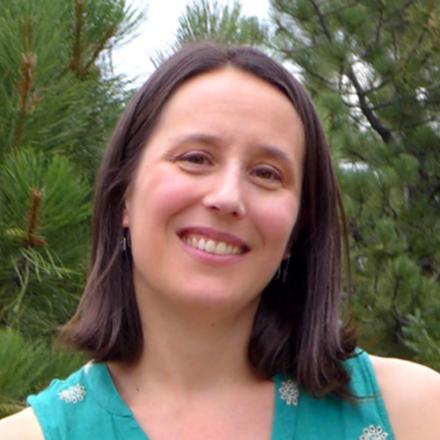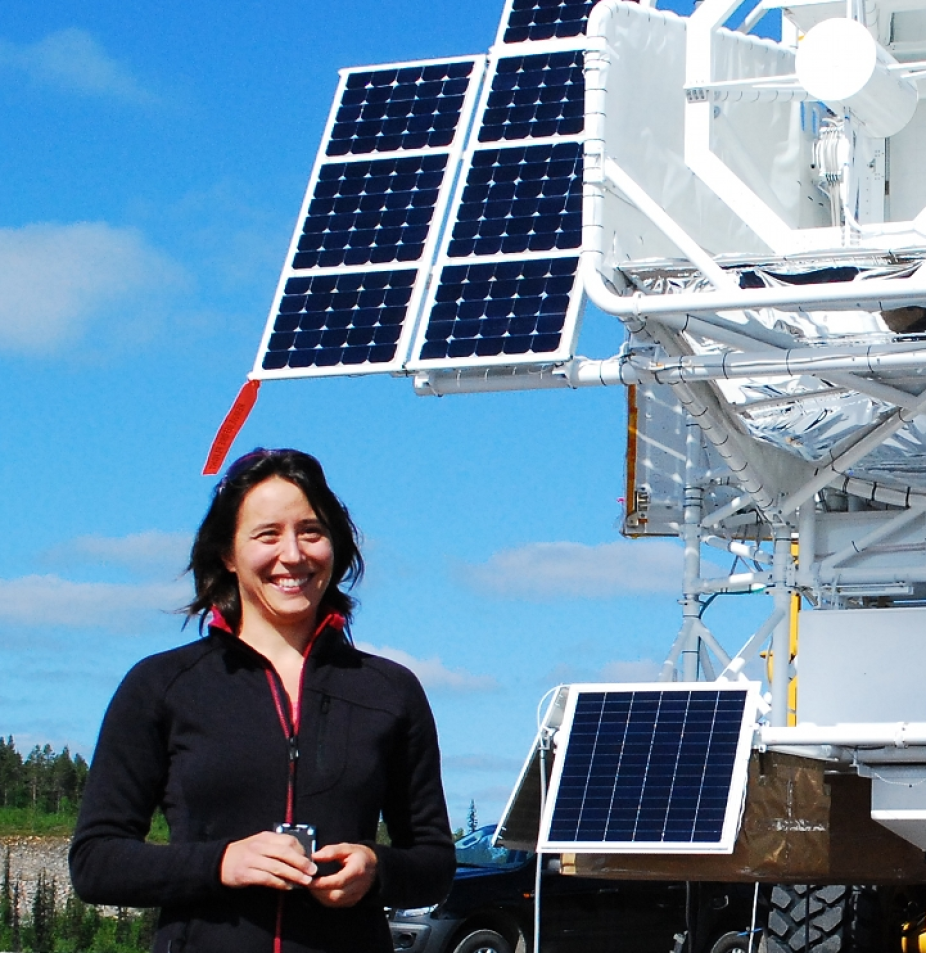Rebecca Centeno

Rebecca Centeno is a Project Scientist in the High Altitude Observatory at NCAR. She received her PhD in Solar Physics from La Laguna University and the Astrophysical Institute of the Canary Islands in December 2006. Dr. Centeno's scientific background is in the field of Solar spectro-polarimetry for remote sensing of magnetic fields in the Sun's atmosphere. These magnetic fields -and other physical properties- cannot be measured directly; rather, they can be inferred from the signatures they imprint on the radiation that is emitted and absorbed in the Solar atmosphere. During her PhD work, Dr. Centeno acquired solid observational training by supporting and leading observing campaigns, using a variety of instruments on ground-based facilities around the world. Her research combined observations with theoretical radiative transfer in order infer information about the physical properties in the photosphere and chromosphere of the Sun. Determining the structure and evolution of the magnetic fields in the Solar atmosphere has always been the centerpiece of her research.

After her Ph.D., Dr. Centeno went on to do a two-year postdoctoral fellowship with the Advanced Study Program of NCAR (Jan 2007 - Jan 2009). During this time, her focus shifted towards space missions, which provide a wealth of consistently high quality data that help to increasingly improve our understanding of the inner-workings of our Sun like never before.
At the end of ther postdoctoral appointment, Dr. Centeno was hired as a Project Scientist I to work with the Helioseismic and Magnetic Imager (HMI) team. The HMI instrument flies onboard NASA's Solar Dynamics Observatory mission (SDO) and continuously monitors the Sun taking images at different wavelengths and polarization states of the light. The HMI project delivers reliable, high-level data products that the scientific community uses to carry out cutting-edge research related to solar dynamics and magnetism. Dr. Centeno's contribution to the project was to develop, optimize and test the spectral line inversion code that turns measurements of polarization into quantities such as the magnetic field vector and Doppler velocities.
Since Summer of 2012, Dr. Centeno leads the Community Spectro-Polarimetric Analysis Center (CSAC) effort. This is an HAO/NCAR strategic initiative to develop, maintain and compile tools for the calibration, analysis, spectral line inversion, magnetic field disambiguation and visualization of spectro-polarimetric data. Also, a part of CSAC's core mission is to educate the next-generation solar scientists in the interpretation of spectral line radiation and polarization.
CSAC provides calibrated data and high-level data products from instruments that have HAO involvement. Funding from the Hinode (Japan/US/UK) mission supports CSAC, helping it maintain the data pipeline and curate the data stream from the spectro-polarimeter on board Hinode. We produce 3 different data levels (from calibrated spectra to inferred physical quantities). This opens up this resource to the entire scientific community and enables researchers, with little or no expertise in radiative transfer, to exploit the data to their full potential.
CSAC is involved in researching and developing tools for the interpretation of chromopsheric spectral line polarization, looking towards the next generation of spectro-polarimeters: HAO's ChroMag and the Visible Spectro-Polarimeter (ViSP) of the DKI Solar Telescope.